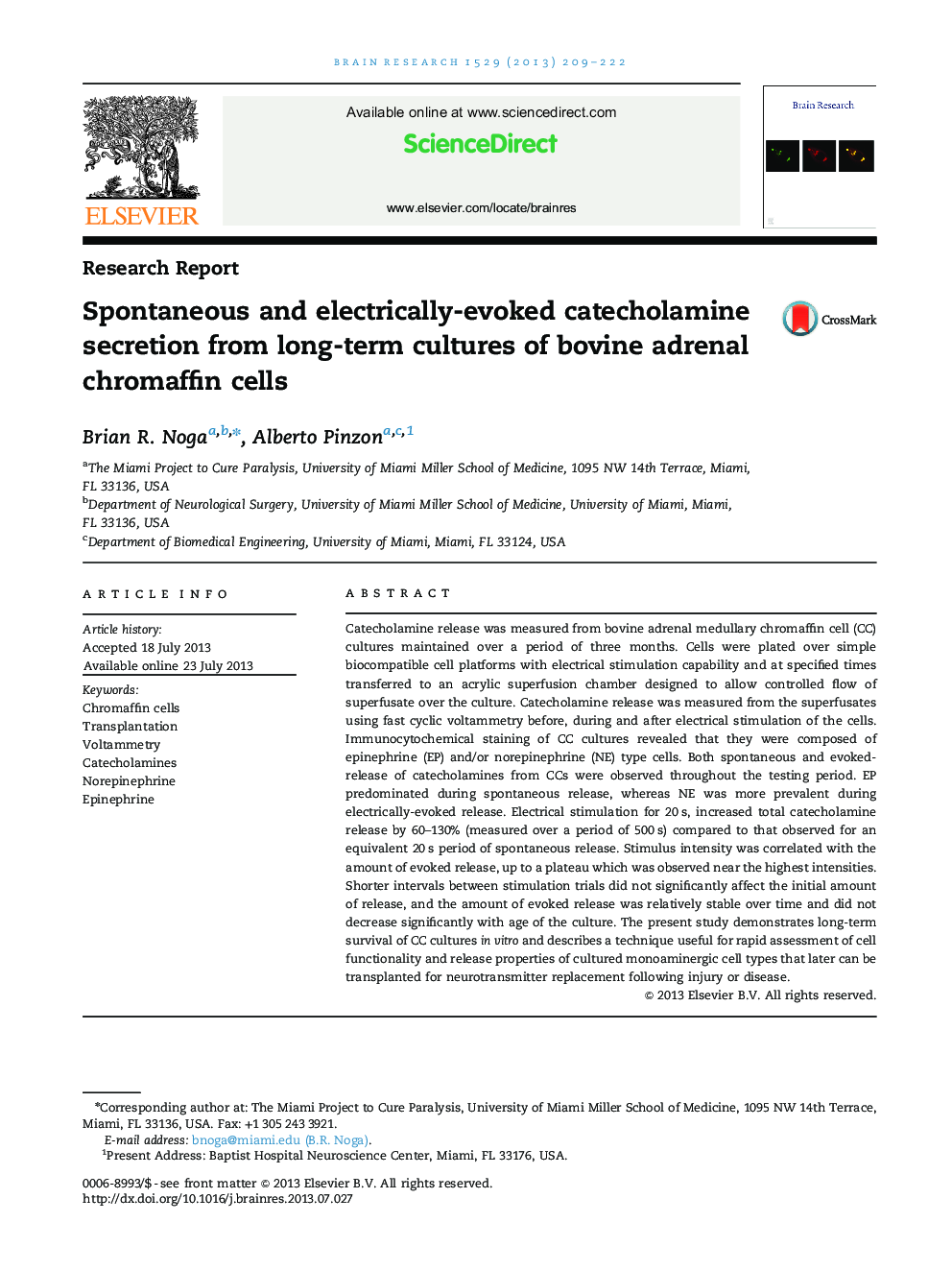| Article ID | Journal | Published Year | Pages | File Type |
|---|---|---|---|---|
| 6263790 | Brain Research | 2013 | 14 Pages |
â¢Bovine chromaffin cells (CCs) were maintained in long term culture.â¢Catecholamine release was measured using fast cyclic voltammetry.â¢Epinephrine predominated during spontaneous secretion.â¢Electrical stimulation enhanced secretion of norepinephrine.â¢Long-term survival of isolated CCs increase flexibility of transplantation protocols.
Catecholamine release was measured from bovine adrenal medullary chromaffin cell (CC) cultures maintained over a period of three months. Cells were plated over simple biocompatible cell platforms with electrical stimulation capability and at specified times transferred to an acrylic superfusion chamber designed to allow controlled flow of superfusate over the culture. Catecholamine release was measured from the superfusates using fast cyclic voltammetry before, during and after electrical stimulation of the cells. Immunocytochemical staining of CC cultures revealed that they were composed of epinephrine (EP) and/or norepinephrine (NE) type cells. Both spontaneous and evoked-release of catecholamines from CCs were observed throughout the testing period. EP predominated during spontaneous release, whereas NE was more prevalent during electrically-evoked release. Electrical stimulation for 20Â s, increased total catecholamine release by 60-130% (measured over a period of 500Â s) compared to that observed for an equivalent 20Â s period of spontaneous release. Stimulus intensity was correlated with the amount of evoked release, up to a plateau which was observed near the highest intensities. Shorter intervals between stimulation trials did not significantly affect the initial amount of release, and the amount of evoked release was relatively stable over time and did not decrease significantly with age of the culture. The present study demonstrates long-term survival of CC cultures in vitro and describes a technique useful for rapid assessment of cell functionality and release properties of cultured monoaminergic cell types that later can be transplanted for neurotransmitter replacement following injury or disease.
